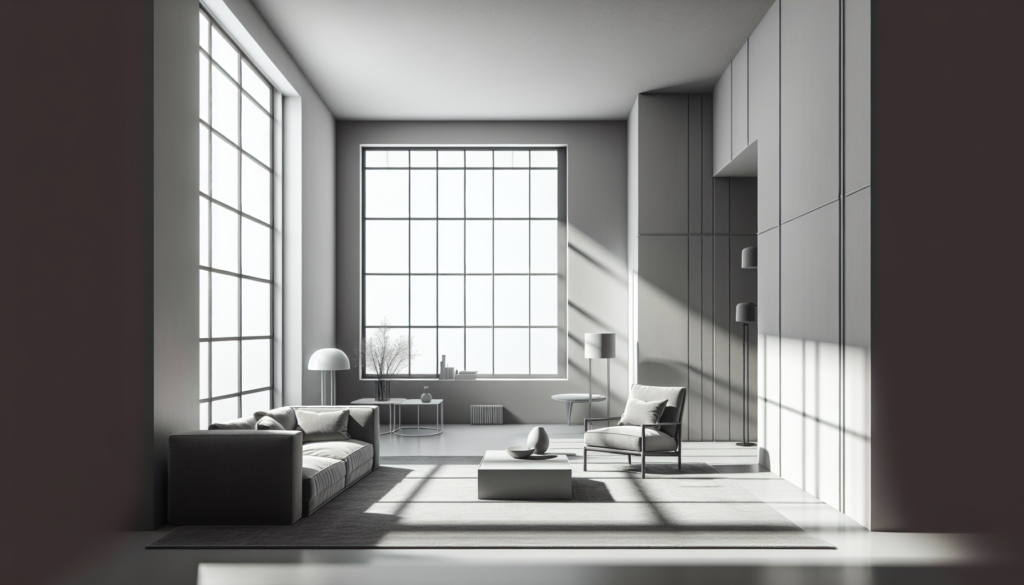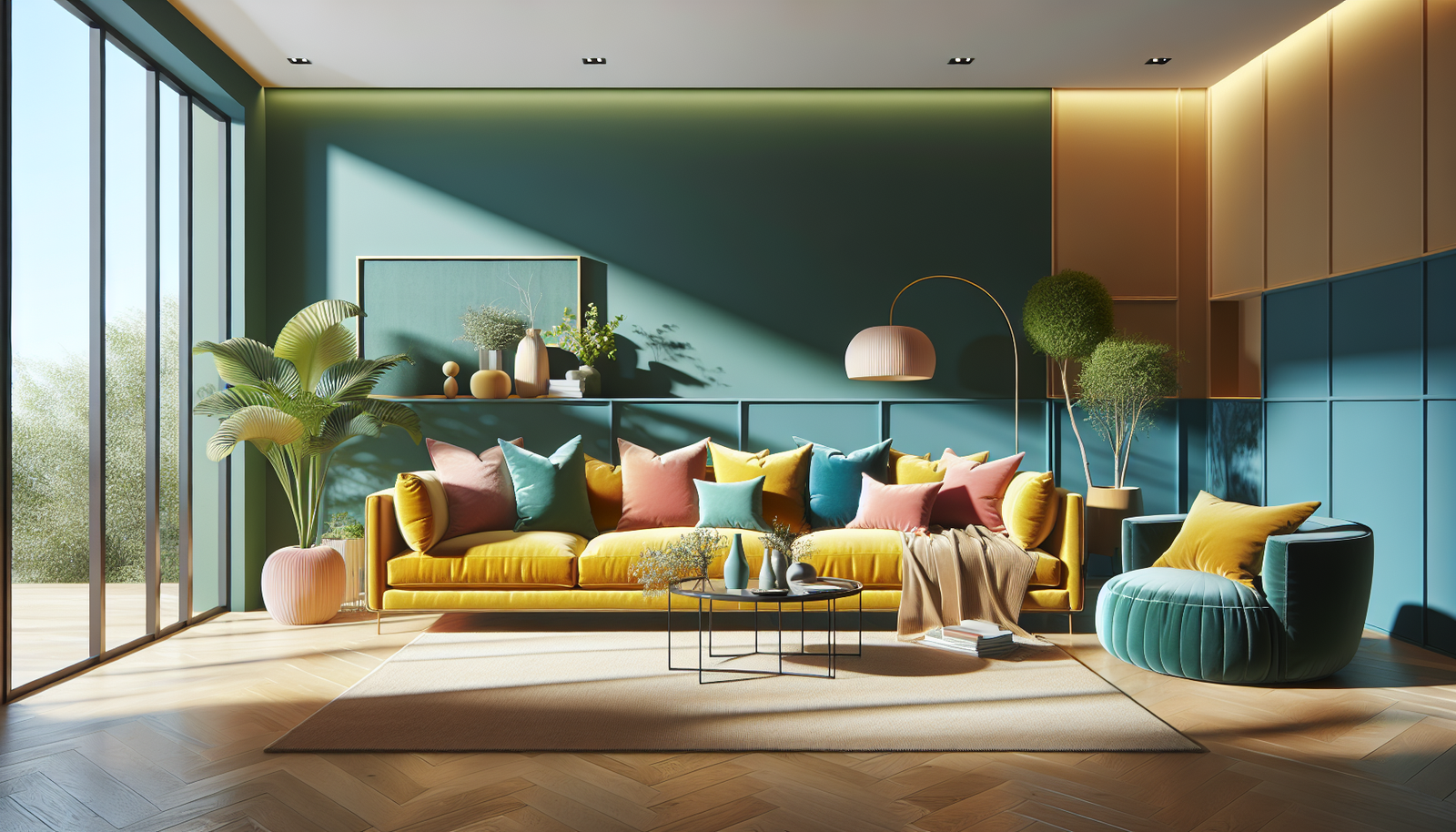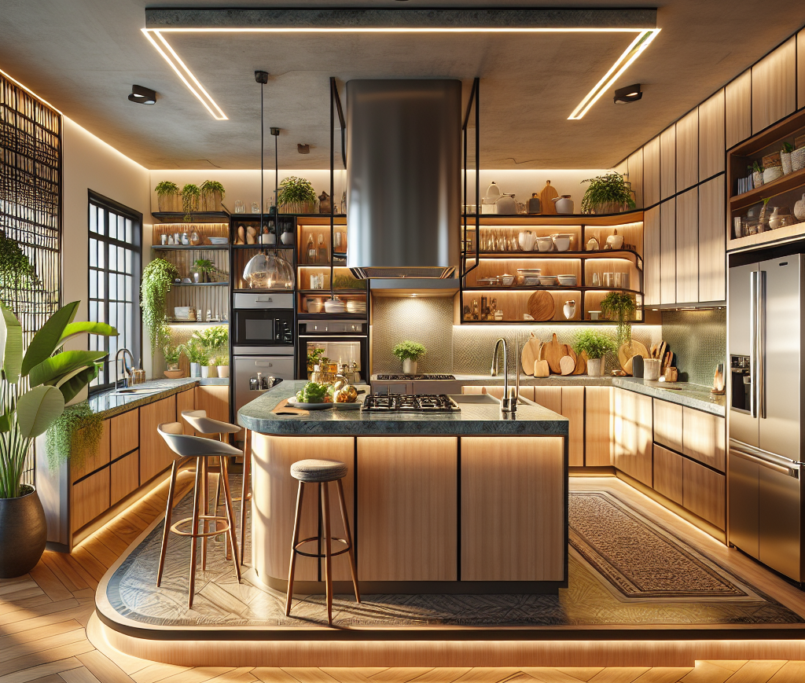Unlocking the Power of Color: Transforming Your Interiors


Introduction:
I’m here to unveil the transformative power of color. Colors have the ability to captivate, soothe, and inspire, making them an essential element in crafting harmonious and visually compelling interiors. In this blog, we’ll delve into the intricate world of color, exploring its impact, emotional connections, and the Vastu principles that guide its strategic use.
1: The Influence of Color: How Hues Shape Your Space
Colors possess an innate ability to influence our mood, perception, and overall experience of a space. From the vibrant hues that energize a room to the calming tones that promote relaxation, each color carries its own unique set of characteristics. By understanding the psychological and visual effects of different colors, you can strategically leverage them to enhance the ambiance and functionality of your interiors.
[For example, warm colors like red, orange, and yellow tend to evoke feelings of warmth, energy, and vitality, making them suitable for spaces where you want to foster a lively atmosphere. On the other hand, cool colors such as blue, green, and purple often have a soothing and serene effect, creating a sense of tranquility and retreat.]
2: Color Therapy: Harnessing the Emotional Impact of Shades
Delving deeper into the realm of color, we uncover its remarkable therapeutic properties. Color therapy, also known as chromotherapy, is a holistic approach that harnesses the power of hues to promote emotional and psychological well-being. By strategically incorporating specific colors into your interiors, you can tap into their inherent healing properties and create spaces that nourish the mind, body, and spirit.
[For instance, the calming blue hues can help reduce stress and anxiety, while the energizing yellow tones can boost creativity and inspiration. Incorporating these colors into your living spaces can have a profound impact on your overall well-being and mindset.]
3: Vastu and the Science of Color: Balancing Your Interiors
Intertwined with the art of interior design is the ancient science of Vastu, which emphasizes the harmonious placement of elements within a living space. When it comes to color, Vastu principles offer guidance on how to strategically use different hues to achieve balance, stability, and positive energy flow. By aligning your color choices with Vastu principles, you can create interiors that not only captivate the eye but also nurture the soul.
[For example, according to Vastu, the north and east directions are associated with cool, soothing colors like blue and green, while the south and west directions are best suited for warmer hues like red and yellow. Incorporating these color placements can help foster a sense of equilibrium and well-being within your living spaces.]
4: Elevating the Ordinary: How Color Can Breathe Life into Your Design
Color has the remarkable ability to transform the ordinary into the extraordinary. Whether it’s a simple accent wall, a vibrant piece of furniture, or a captivating lighting fixture, the strategic use of color can breathe new life into your interiors, making even the most mundane elements stand out with elegance and visual interest.
[By playing with bold, contrasting colors or subtle, harmonious palettes, you can create a sense of depth, dimension, and visual harmony that elevates the overall design of your space. Experiment with different color combinations, textures, and layering to unlock the true potential of your interiors.]
5: The Versatility of Color: Exploring Its Many Applications
The beauty of color lies in its versatility. From large-scale design decisions to the smallest of details, color can be applied in countless ways to enhance the aesthetic and functionality of your interiors. Whether you’re looking to create a cohesive color scheme, add a pop of personality, or seamlessly blend different design elements, the possibilities are endless.
[Consider using color to define different zones within a room, such as a vibrant accent wall to designate a reading nook or a soothing palette to create a relaxing bedroom oasis. Experiment with bold, statement-making hues or subtle, monochromatic themes – the choice is yours, and the results can be truly transformative.]
The strategic use of color can be a powerful tool in creating a specific mood or ambiance within an interior space. Here are some examples of how different color choices can influence the overall atmosphere:
1: Warm Colors for Energizing Spaces: Warm hues such as red, orange, and yellow are known to evoke feelings of warmth, energy, and excitement. These colors are often used in spaces where you want to promote a lively and stimulating ambiance, such as living rooms, dining areas, or home offices. The vibrant nature of warm colors can help create a cozy and welcoming atmosphere.
[For example, an accent wall in a rich terracotta shade or the incorporation of mustard yellow accents can instantly energize a living room and make it feel more inviting and dynamic.]
2: Cool Colors for Calming and Relaxing Environments: Cool colors like blue, green, and purple are often associated with serenity, tranquility, and relaxation. These hues can help create a soothing and calming ambiance, making them well-suited for spaces where you want to promote a sense of calmness and restoration, such as bedrooms, meditation rooms, or spa-like bathrooms.
[Incorporating soft blue tones on the walls or layering different shades of green through textiles and accessories can help transform a bedroom into a serene oasis, encouraging relaxation and restful sleep.]
3: Neutral Colors for Versatile and Balanced Spaces: Neutral colors, such as white, beige, and gray, are often considered the foundation of a color scheme. They can create a sense of balance, harmony, and versatility within a space. Neutral palettes can serve as a blank canvas, allowing you to easily incorporate pops of color or experiment with different design styles without overwhelming the space.
[A neutral color scheme in a living room, with accents of natural wood tones and textured fabrics, can provide a calming and grounding ambiance, making the space feel polished and cohesive.]
4: Contrasting Colors for Dramatic and Attention-Grabbing Spaces: The strategic use of contrasting colors, such as complementary hues on the color wheel, can create a visually striking and attention-grabbing ambiance. This approach can be particularly effective in spaces where you want to make a bold statement, such as an entryway, a focal wall, or a feature piece of furniture.
[Pairing a deep navy blue with vibrant yellow accents in a dining room can create a dynamic and dramatic atmosphere, instantly capturing the attention of guests and setting the tone for the space.]
By understanding the psychological and emotional associations of different color families, you can strategically use them to craft specific moods and ambiances within your interior spaces, ultimately enhancing the overall design and creating a cohesive and immersive experience for the occupants.
Conclusion:
Embracing the power of color is the key to unlocking the full potential of your interior spaces. By understanding the emotional, psychological, and Vastu-aligned properties of different hues, you can create interiors that not only captivate the eye but also nourish the soul. Embark on a journey of color exploration and let it be the catalyst that transforms your living spaces into harmonious, visually stunning, and truly inspiring environments.





